Unleashing the Healing Power of Red Light Therapy for Knee Pain Relief
In recent years, red light therapy has emerged as a compelling alternative treatment option for a variety of health concerns, with a particular focus on musculoskeletal disorders. Among these, knee pain and inflammation have gained considerable attention due to their widespread impact on millions of individuals across the globe. This non-invasive therapy utilizes specific wavelengths of light that penetrate the skin, stimulating essential cellular processes. As a result, it offers a potential reprieve from chronic discomfort and the mobility limitations often accompanying knee-related issues. By fostering natural healing, red light therapy represents a beacon of hope for those seeking practical solutions to their knee health challenges.
As the global population ages and the incidence of conditions such as osteoarthritis and sports injuries continues to rise, the demand for effective, safe, and accessible treatments has never been more crucial. Red light therapy has emerged as a versatile option that resonates with practitioners and patients. Its appeal lies in its dual capacity to deliver therapeutic benefits while minimizing side effects commonly associated with pharmaceutical interventions and invasive procedures. This article aims to explore the mechanisms of red light therapy, its specific benefits for knee revitalization, and practical insights into its application, ultimately providing a comprehensive understanding of how this innovative treatment can enhance knee health for individuals of all ages.
Key Takeaways on the Benefits of Infrared Light Therapy for Knee Health
- Red light therapy is a non-invasive treatment that employs low-level red light to foster knee health and alleviate pain and inflammation.
- This therapy promotes the body's natural healing processes by enhancing blood flow and diminishing inflammation in the knee joint.
- Key benefits of infrared therapy for knee revitalization include increased mobility, decreased pain levels, and expedited recovery from knee injuries.
- The underlying science of red light therapy revolves around stimulating cellular energy production and mitigating oxidative stress within the knee joint.
- To effectively use red light therapy for knee revitalization, one must target the affected area with a specialized red light therapy device for a predetermined duration during each session.
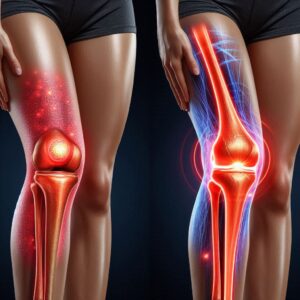 Understanding the Mechanism of Red Light Therapy in Alleviating Knee Pain and Inflammation
Understanding the Mechanism of Red Light Therapy in Alleviating Knee Pain and Inflammation
At the heart of red light therapy's effectiveness is its remarkable ability to stimulate cellular activity through a process known as photobiomodulation. When specific wavelengths of red and near-infrared light are applied to the skin, they penetrate deeply into the underlying tissues, promoting a significant increase in cell energy production. This crucial process occurs primarily in the mitochondria, regarded as the powerhouse of the cell, where light energy is converted into adenosine triphosphate (ATP), the energy currency of cellular functions.
Enhancing ATP production leads to improved cellular function, which is vital for effective tissue repair and regeneration. Consequently, this surge in energy availability can substantially alleviate pain and inflammation in the knee joint, providing a much-needed respite for those suffering from chronic conditions. Furthermore, red light therapy has been scientifically shown to modulate inflammatory responses within the body. By influencing the release of various cytokines and growth factors, this therapy can effectively reduce swelling and promote the healing of damaged tissues.
The anti-inflammatory effects of red light therapy are particularly beneficial for individuals facing conditions such as arthritis or tendonitis, where inflammation is a significant contributor to pain and mobility limitations. As a result, many patients frequently report decreased pain and a noticeable improvement in their overall range of motion and quality of life. This dual-action approach—targeting pain and inflammation—positions red light therapy as a compelling option for those seeking comprehensive solutions for knee health challenges.
Exploring the Comprehensive Benefits of Infrared Therapy for Knee Revitalization
Red light therapy's advantages extend beyond simple pain relief; they encompass a holistic approach to knee revitalization that promotes overall joint health and functionality. One of the most notable benefits is its capacity to enhance circulation in the affected area. Improved blood flow not only facilitates the delivery of essential nutrients and oxygen to the tissues but also aids in removing metabolic waste products that can accumulate during injury or inflammation.
This enhanced circulation accelerates healing and contributes to long-term joint health by ensuring the knee remains nourished and resilient against future injuries. Additionally, red light therapy promotes collagen synthesis within the knee joint. As a vital protein, Collagen provides the structural support necessary for cartilage, tendons, and ligaments. By stimulating the activity of fibroblasts—the cells responsible for collagen production—red light therapy can help strengthen these connective tissues, thus reducing the risk of injury and degeneration over time.
This regenerative aspect is particularly advantageous for athletes and individuals engaged in physically demanding activities, as it promotes recovery and enhances performance. Ultimately, the multifaceted benefits of red light therapy make it an invaluable resource for anyone looking to revitalize their knee health and improve their overall quality of life.
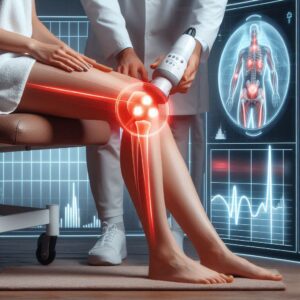 Diving into the Scientific Foundations of Red Light Therapy for Knee Health
Diving into the Scientific Foundations of Red Light Therapy for Knee Health
The scientific principles underlying red light therapy are grounded in decades of research exploring the effects of light on biological systems. Photobiomodulation has been extensively investigated across various disciplines, including dermatology, dentistry, and orthopaedics. The wavelengths typically employed in red light therapy—ranging from 600 to 1000 nanometers—are particularly effective at penetrating human tissue without causing thermal damage, which is critical for safe application on sensitive areas like the knees.
Moreover, numerous clinical studies have substantiated the efficacy of red light therapy in reducing pain and inflammation linked to knee conditions. For example, research has demonstrated that patients suffering from osteoarthritis experience significant improvements in pain levels and functional mobility following a series of red light therapy sessions. These findings are bolstered by objective measures such as reduced joint stiffness and increased range of motion.
As ongoing studies validate the effectiveness of red light therapy, it is increasingly being incorporated into conventional treatment protocols for knee health. This integration offers patients a scientifically backed option for managing their conditions, further enhancing the credibility and appeal of this innovative treatment.
Step-by-Step Guide to Using Red Light Therapy for Knee Revitalization
Utilizing infrared light therapy for knee revitalization is straightforward and can be seamlessly integrated into one's daily routine. Typical therapy sessions range from 10 to 20 minutes and can be performed several times a week based on individual needs and healthcare professional recommendations. The therapy can be administered using handheld devices or larger panels specifically designed for targeting larger areas like the knees.
Patients are encouraged to position themselves comfortably while ensuring the device is placed at a suitable distance from the skin to maximize light absorption without causing discomfort. Before commencing treatment, it is advisable to consult with a healthcare provider who can evaluate individual conditions and tailor a regimen that best meets one's needs. During therapy sessions, patients may experience a gentle warmth or tingling sensation as the light penetrates the skin; however, this sensation is generally well-tolerated and does not lead to any adverse effects.
Consistency is key to achieving optimal results with red light therapy; therefore, establishing a regular schedule can significantly enhance the therapeutic benefits over time. As patients notice improvements in their symptoms, they may find it easier to participate in physical activities previously hampered by pain or discomfort, leading to a more active and fulfilling lifestyle.
Real-Life Success Stories: Transformations Through Red Light Therapy for Knee Pain
The practical application of red light therapy has produced numerous inspiring success stories that underscore its transformative impact on knee health. One notable case study involved an active 55-year-old woman who was grappling with chronic knee pain due to osteoarthritis. After several weeks of consistent red light therapy sessions, she reported significantly reduced pain levels and increased capacity to engage in previously avoided activities, such as hiking and cycling. Her experience emphasizes how this innovative treatment can restore physical function and enhance overall quality of life.
Another compelling example is a former athlete who sustained multiple knee injuries throughout his professional career. Despite undergoing various treatments, including physical therapy and corticosteroid injections, he continued to experience debilitating pain that severely limited his mobility. After incorporating red light therapy into his rehabilitation program, he observed remarkable improvements in both pain management and joint function. His story is a testament to the potential of red light therapy as a viable treatment option for individuals struggling with persistent knee issues, illustrating how it can facilitate recovery and significantly enhance overall well-being.
 Essential Tips for Effectively Incorporating Red Light Therapy into Your Knee Health Routine
Essential Tips for Effectively Incorporating Red Light Therapy into Your Knee Health Routine
Integrating red light therapy into your knee health routine can be straightforward and rewarding when approached with intention and consistency. To start, it is essential to establish a dedicated space for therapy that is free from distractions. Creating an environment conducive to relaxation can enhance the overall experience and encourage regular therapy use.
Additionally, setting specific goals—such as reducing pain levels or improving mobility—can provide motivation and help track progress over time. Furthermore, combining red light therapy with complementary practices can amplify its benefits. Engaging in gentle exercises or stretches before or after therapy sessions can further promote circulation and flexibility within the knee joint, maximizing the positive effects of the treatment.
Moreover, maintaining a well-balanced diet rich in anti-inflammatory foods can support overall joint health and augment the effects of red light therapy. By adopting a holistic approach that integrates various strategies alongside this innovative treatment, individuals can optimize their knee health journey and pave the way for lasting improvements in their quality of life.
Your Questions Answered: Frequently Asked Questions About Red Light Therapy for Knees
What is red light therapy, and how does it work?
Red light therapy for knees is a non-invasive treatment method that employs low-level red light to effectively reduce pain and inflammation, promote healing, and improve overall function in the knee joint. By harnessing specific wavelengths of light, this therapy stimulates cellular processes that lead to enhanced healing and recovery.
How does red light therapy specifically benefit knees?
Red light therapy works by stimulating the mitochondria within the cells of the knee joint, increasing energy production and promoting tissue repair. This process reduces pain and inflammation while also improving mobility and overall function in the knee, making it a valuable treatment option for various knee conditions.
What are the notable benefits of red light therapy for knee health?
The benefits of infrared light therapy may include reduced pain and inflammation, improved range of motion, quicker healing from injuries, and enhanced overall function in the knee joint. This comprehensive approach to knee health makes red light therapy appealing to individuals seeking to improve their quality of life.
Is red light therapy a safe option for knee treatment?
Red light therapy is widely considered a safe and non-invasive treatment for knee pain and inflammation. Unlike other interventions, it does not involve the use of drugs or surgery, and there are typically no known side effects associated with this therapy, making it a low-risk option for those seeking relief.
How is red light therapy administered for knee conditions?
Red light therapy for knees can be administered using a handheld device that emits low-level red light. The device is positioned directly on the skin over the affected knee, and the treatment duration typically lasts for a specified amount of time, as a healthcare professional recommends for optimal results.
Is red light therapy effective for all knee conditions?
While red light therapy has shown considerable promise in reducing pain and inflammation in the knee joint, its effectiveness may vary depending on the specific condition being treated. It is essential to consult a healthcare professional to determine if red light therapy suits an individual's knee condition.














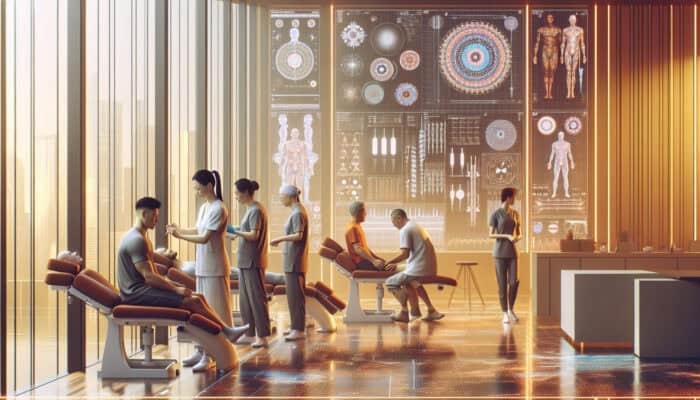







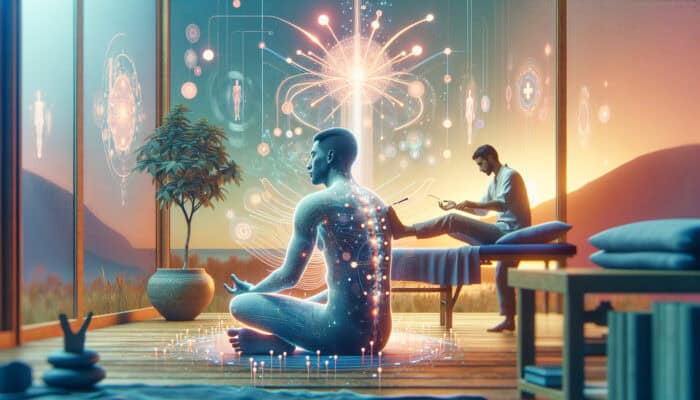
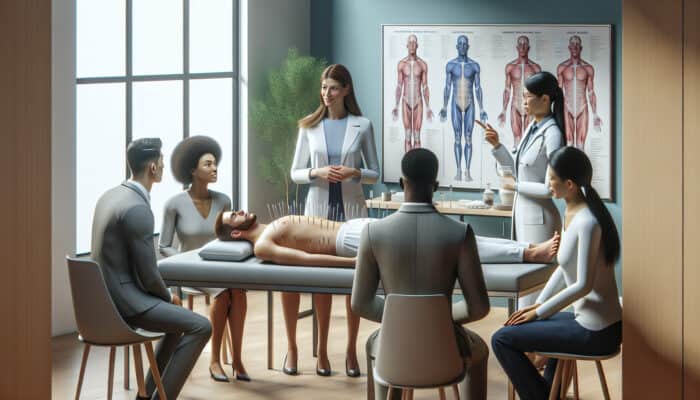

40 Comments
I’ve been curious about red light therapy for a while, especially since knee pain runs in my family. It sounds so promising, particularly for those like my dad who struggle daily with arthritis. I love that it’s non-invasive—so much of the pain management landscape feels overly reliant on medications with side effects we’d rather avoid. I’ve dabbled in some at-home options, but I’m still on the fence about their effectiveness.
It’s great to hear about your interest in red light therapy, especially since it sounds like it could be a good fit for your dad! You’re right; the non-invasive aspect is really appealing in a world where many solutions come with less-than-ideal side effects.
Your insights on red light therapy resonate deeply, especially for those of us navigating the challenging waters of knee pain and its impact on daily life. I remember my own struggles with knee discomfort after years of running, which not only limited my mobility but also affected my overall well-being. Exploring alternative treatments like red light therapy has been a pivotal part of my healing journey.
Your insights on red light therapy resonate deeply, especially for those of us navigating the challenging waters of knee pain and its impact on daily life. I remember my own struggles with knee discomfort after years of running, which not only limited my mobility but also affected my overall well-being. Exploring alternative treatments like red light therapy has been a pivotal part of my healing journey.
It’s interesting how deeply our experiences with pain can influence how we approach health and wellness. I think many of us recognize that shift in perspective, especially when dealing with something as pervasive as chronic discomfort. Athletes often carry the physical legacy of their past endeavors for a long time; every twist and turn can add up, both physically and mentally. Your understanding of this makes a lot of sense.
You’ve hit on something really important when it comes to how we view health and wellness through the lens of pain. It’s amazing how discomfort can force us to reassess what we think we know about our bodies. For athletes, especially, the journey through injuries or ongoing discomfort can be eye-opening. It changes the narrative from merely pushing through pain to understanding its signals and what our bodies are truly telling us.
You’ve touched on a fascinating aspect of health and wellness that often gets overlooked. Pain really does serve as a powerful teacher, doesn’t it? It’s interesting how discomfort can shift our perspective from a purely performance-based mentality to a more holistic understanding of our bodies. For athletes, the struggle with injuries isn’t just about physical recovery but also about learning to listen to the body’s signals.
“Absolutely, the way we interpret pain can truly reshape our approach to health. If you’re curious about exploring this perspective further, check out this resource that dives deeper into understanding the body’s signals.”
https://mcrtherapies.co.uk/fb
You raise a really interesting point about how pain can indeed shift our understanding of our bodies. I think it’s such a vital aspect of health and wellness that we often overlook, especially in a culture that tends to prioritize performance and achievement at all costs.
You bring up a crucial point about how pain affects our relationship with our bodies. It’s interesting how, in a society that pushes us to perform and achieve, we can often ignore the quieter signals our bodies are sending. Pain can be a wake-up call—a moment to pause and reassess not just our physical state but our emotional and mental wellbeing as well.
“Absolutely, it’s crucial to cultivate a deeper awareness of our bodies, especially in today’s fast-paced world. If you’re curious to explore this topic further, check out this insightful resource!”
https://mcrtherapies.co.uk/ig
You’ve brought up a crucial point regarding our perceptions of pain and its role in health. It’s not just about discomfort; it’s about the messages our bodies send us. For athletes, the societal pressure to grit your teeth and push through can overshadow the subtler, but equally important, insights that pain provides. When we start really listening instead of just tolerating, we open up a pathway to understanding our limitations and capabilities in a much deeper way.
“I’m glad you resonated with that perspective! If you’re interested in exploring more about how to navigate pain and enhance your wellness journey, check out this insightful resource.”
https://mcrtherapies.co.uk/ig
It’s true that pain can really change how we view health and wellness. For many athletes, the struggle isn’t just about the physical pain but how it affects their overall lifestyle and identity. That shift in perspective can redefine what ‘wellness’ means on a personal level.
I’m glad my journey resonates with you! If you’re curious about the potential benefits of red light therapy for recovery, check out this resource for more insights.
https://mcrtherapies.co.uk/yt
Navigating knee pain can feel like an uphill battle, especially when it stems from something you love, like running. It’s tough when an activity that brought you joy becomes a source of discomfort. Your experience highlights how intertwined physical pain and emotional well-being can be—it’s not just about the knees; it’s about how those struggles ripple through other aspects of our lives, affecting our mood, energy, and overall quality of life.
This is fascinating! I had a friend who swore by red light therapy for his knee pain after years of playing soccer. He used to say it felt like his knees were getting a spa day, while the rest of him was still fighting off the inevitable aging battle. I couldn’t help but picture tiny lights creating a wellness rave right there in his joints!
I love how you painted that picture—“wellness rave” is such a clever way to describe it. Red light therapy has definitely been gaining more attention lately, especially in the wellness community. It’s fascinating how technology is redefining our approach to health and recovery. Your friend’s experience really highlights how sometimes the most unconventional therapies can provide relief in ways traditional methods struggle to.
The term “wellness rave” really captures the vibrant energy around these emerging treatments, doesn’t it? It’s interesting how red light therapy, often seen as a fringe trend, is finding its way into more discussions about holistic health. As we continue to face the limitations of conventional methods, it’s refreshing to see how individuals are willing to explore innovative options that might not be mainstream—but often yield impressive benefits.
Your exploration of red light therapy’s potential for knee pain relief is really fascinating! I’ve personally experienced the frustrating limitations of knee pain, which often feels like a barrier to enjoying everyday activities. This therapy sounds promising, especially given its non-invasive nature.
This post on the healing power of red light therapy resonates deeply with me, particularly as I have witnessed its effects on loved ones grappling with knee pain. It’s fascinating how a non-invasive approach can tap into the body’s own healing mechanisms, offering a glimmer of hope for millions.
I really appreciate how you’ve highlighted the potential of red light therapy for knee pain relief. The whole idea of harnessing light for healing seems almost futuristic, but in reality, it’s such a fascinating blend of science and nature. Growing up, I remember my grandparents frequently dealing with arthritis and joint pain, and they often turned to things like heat pads or herbal remedies. It makes me wonder how much easier their lives could have been if they had access to therapies like this.
It’s interesting to hear your perspective, especially since it brings to mind how traditional remedies have always been part of our lives. Your grandparents’ reliance on heat pads and herbal solutions highlights just how essential these personal approaches were, especially in times when they didn’t have access to modern treatments. Red light therapy feels a bit like a bridge between those old-school methods and newer advancements.
“I’m glad you resonated with the potential of red light therapy! If you’re curious to explore more about how it can help with joint pain, check out this resource for additional insights and options.”
https://mcrtherapies.co.uk/yt
It’s fascinating to see the growing interest in red light therapy as a treatment for knee pain, especially given how prevalent these issues are in our aging population. I’ve personally experienced chronic knee discomfort from years of sports activities, and I remember feeling overwhelmed by the traditional treatment options available. The idea that a non-invasive method like red light therapy could stimulate healing at a cellular level really resonates with me.
It’s great to hear about your experience with knee discomfort from sports. That feeling of being overwhelmed by traditional treatment options is something many can relate to. Red light therapy does have a unique appeal because it offers a non-invasive approach that still aims to address those underlying issues.
“I’m glad to hear that you resonate with the potential of red light therapy! If you’re curious to learn more about how it can help with knee pain, check out this resource for insights and guidance.”
https://mcrtherapies.co.uk/ig
I completely understand the feelings of being overwhelmed by traditional treatment options for knee discomfort; it can really feel like navigating a maze sometimes. I’ve been there too, trying to make sense of all the remedies out there. Red light therapy is intriguing in that way—it offers a more holistic and non-invasive approach compared to more conventional treatments.
If you’re exploring non-invasive options for pain relief, you might find some helpful insights in high-intensity laser therapy—it offers a fresh perspective on managing back pain that aligns with a similar approach to red light therapy.
‘High Intensity Laser Therapy for Back Pain Relief’
https://mcrtherapies.co.uk/high-intensity-laser-therapy-for-back-pain-relief/.
Your exploration of red light therapy as a non-invasive alternative for knee pain relief is particularly timely, especially as we see an increasing number of individuals seeking holistic approaches to managing chronic conditions. Having recently experienced knee discomfort myself, I found that traditional treatments often felt insufficient and came with various side effects.
Your experience resonates with many who find themselves navigating the often frustrating landscape of traditional treatments for knee pain. It’s common to seek more holistic alternatives, especially when conventional methods fall short or introduce undesirable side effects. What’s intriguing about red light therapy is how it taps into the body’s natural healing processes without the complications that often accompany medications or invasive procedures.
It’s great to hear your thoughts on red light therapy. Many people are on the lookout for alternatives that don’t carry the weight of side effects, especially when traditional treatments seem to fall short. Knee discomfort can really impact daily life, and it’s encouraging to see interest in holistic approaches gaining momentum.
You make a really good point about the appeal of alternatives that minimize side effects, especially when traditional treatments can sometimes feel like hitting a wall. Knee discomfort can be such a frustrating experience; it limits what we can do and how we enjoy our daily lives.
“I’m glad you found the discussion on red light therapy insightful! If you’re interested in exploring this holistic approach further, check out this link for more information on how it may help with knee discomfort.”
https://mcrtherapies.co.uk/yt
I find it fascinating how red light therapy is carving out its niche in pain management, especially for knee issues that so many face. I’ve recently started experimenting with a handheld device at home, and I must say, the targeted approach has made a noticeable difference in my recovery after long runs. It’s amazing to think about how technology is making such therapeutic options accessible without the need for invasive treatments.
I’ve been reading about red light therapy for a while now, and it’s fascinating to see how it’s gaining traction for knee pain relief. My mom, who has struggled with arthritis for years, recently started using a portable red light device, and she’s convinced it’s helped lessen her discomfort and boost her mobility. It’s interesting to think about how our approach to healthcare is evolving, especially as more people are looking for non-invasive options.
I found your exploration of red light therapy as a treatment for knee pain quite insightful and timely. It’s fascinating to see how non-invasive techniques are becoming more prominent in the landscape of health treatments. Personally, I’ve been grappling with knee issues for some time, and the conventional approaches often felt limited — pain medications and physical therapy provided only temporary relief. Learning about red light therapy paints a picture of a treatment that not only promises symptom relief but also engages with the body’s natural healing processes.
It’s fascinating to see how red light therapy is gaining recognition as a viable option for conditions like knee pain. As someone who has struggled with knee discomfort due to an old sports injury, I’ve explored various treatments, and I’m always in search of non-invasive alternatives. The concept of using light to stimulate healing processes feels so aligned with our broader shift towards holistic health practices.
The exploration of red light therapy as a treatment for knee pain is indeed a fascinating development in the realm of alternative medicine. It seems particularly relevant as more individuals seek out holistic approaches to manage chronic pain without resorting to invasive procedures or dependency on pharmaceuticals.
I agree, the exploration of red light therapy as a treatment for knee pain is indeed a fascinating development. It’s interesting how so many people are turning towards holistic approaches these days. I recently read about the growing interest in non-invasive treatments, which seems to be part of a larger trend where individuals are becoming more proactive about their health choices.
Your exploration of red light therapy as a potential treatment for knee pain is timely and resonates deeply, especially considering the growing awareness around non-invasive treatment options. I’ve personally experienced the frustrating limitations that knee pain can impose on daily life, and it’s refreshing to learn about alternative therapies like this one that might offer a glimmer of hope.
I can completely relate to the frustrations that knee pain brings into daily life. It often feels like a barrier that limits not only mobility but also enjoyment in everyday activities. There’s something particularly challenging about enduring an issue that, on the surface, many people can’t see, which can make it all the more isolating.
“I’m so glad to hear that my article resonates with you! If you’re interested in exploring red light therapy further and how it can help with knee pain, check out this resource for more information.”
https://mcrtherapies.co.uk/ig
It’s encouraging to hear that the exploration of red light therapy resonates with you, especially given the challenging impact knee pain can have on daily life. Many people may not realize how much a simple treatment like this could shift their experiences and restore some degree of normalcy.
I’m glad to hear that the article resonated with you! If you’re interested in exploring red light therapy further, I invite you to check out this resource that delves deeper into its benefits for knee pain.
https://mcrtherapies.co.uk/fb
This post raises intriguing points about the role of red light therapy in managing knee pain, which I find particularly relevant given the increasing prevalence of musculoskeletal disorders in our aging population. Having experienced knee discomfort myself due to the demands of an active lifestyle, I have explored various treatments, and I appreciate the push toward non-invasive options like this.
It’s fascinating to see how red light therapy is garnering attention as a viable solution for knee pain relief. I resonate deeply with your thoughts on the non-invasive nature of this treatment, especially given the overwhelming number of people, including my own family members, who struggle with chronic knee issues. As someone who has witnessed firsthand the limitations that knee pain can impose on daily life, it’s refreshing to explore alternatives that sidestep the traditional routes of medication or invasive procedures.
It’s great to hear that you find red light therapy intriguing; it certainly is gaining traction as a potential relief option for knee pain. Your personal connection to the issue brings a valuable perspective to the table. Chronic knee pain can really affect someone’s quality of life, limiting not just physical activity but also the simple enjoyment of everyday activities.
The discussion around red light therapy is indeed both intriguing and timely, particularly as our understanding of pain management evolves. While the potential benefits for knee pain relief are compelling, I wonder about the broader implications of relying on such treatments, especially as they become more mainstream.
Ah, red light therapy! Who knew saving my knees could feel like I’m auditioning for a sci-fi movie? I half expect to see little aliens pop out to fix my joints. But in all seriousness, after years of trying everything from ice packs to questionable knee braces that make me look like I’m preparing for a wrestling match, I’m intrigued by this non-invasive approach.